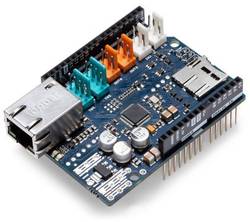Poe Shield Slots
Item sockets are slots on equipment or resonators into which other items can be placed. There are 3 types of sockets: Coloured sockets in which skill gems of a matching colour can be socketed Coloured sockets can be linked together, which is required for support skill gems to provide benefits to linked active skill gems. This slot is a main source of Energy Shield for Energy Shield builds, so Shields with very large Innate Energy Shield (300+), with Elemental Resistances will be well sought after. Energy Shield bases can also get Spell Damage and Spell Critical Strike Chance, which is very valuable to spell casting builds. The Heist League mechanic is the most generous reward structure ever featured in a Path of Exile to date. The amount of currency, item-rewards, and straight up new toys that were added with this league is absolutely unprecedented and deserves its own, lengthy, write-up on this page. Of Exile (chaos resistance) of Destruction (critical strike multiplier) These are all suffixes. We don’t care for the other modifiers. In this case, since there’s still one affix slot available, we can craft the (Suffixes Cannot Be Changed) to protect these mods and reroll the prefixes. We then scour the amulet, so only the suffixes remain.
Arduino Ethernet Shield V1
| Arduino Ethernet Shield R3 Front | Arduino Ethernet Shield R3 Back |
Overview
NOTE: this product is currently retired and the documentation will not be kept up-to-date
The Arduino Ethernet Shield V1 connects your Arduino to the internet in mere minutes. Just plug this module onto your Arduino board, connect it to your network with an RJ45 cable (not included) and follow a few simple instructions to start controlling your world through the internet. As always with Arduino, every element of the platform – hardware, software and documentation – is freely available and open-source. This means you can learn exactly how it's made and use its design as the starting point for your own circuits. Hundreds of thousands of Arduino boards are already fueling people’s creativity all over the world, everyday. Join us now, Arduino is you!

- Requires an Arduino board (not included)
- Operating voltage 5V (supplied from the Arduino Board)
- Ethernet Controller: W5100 with internal 16K buffer
- Connection speed: 10/100Mb
- Connection with Arduino on SPI port
Description
The Arduino Ethernet Shield V1 allows an Arduino board to connect to the internet. It is based on the Wiznet W5100 ethernet chip (datasheet). The Wiznet W5100 provides a network (IP) stack capable of both TCP and UDP. It supports up to four simultaneous socket connections. Use the Ethernet library to write sketches which connect to the internet using the shield. The ethernet shield connects to an Arduino board using long wire-wrap headers which extend through the shield. This keeps the pin layout intact and allows another shield to be stacked on top.


The most recent revision of the board exposes the 1.0 pinout on rev 3 of the Arduino UNO board.
The Ethernet Shield V1 has a standard RJ-45 connection, with an integrated line transformer and Power over Ethernet enabled.
There is an onboard micro-SD card slot, which can be used to store files for serving over the network. It is compatible with all the Arduino/Genuino boards. The on-board micro SD card reader is accessible through the SD Library. When working with this library, SS is on Pin 4. The original revision of the shield contained a full-size SD card slot; this is not supported.
The shield also includes a reset controller, to ensure that the W5100 Ethernet module is properly reset on power-up. Previous revisions of the shield were not compatible with the Mega and need to be manually reset after power-up.
Download:arduino-ethernet-shield-06-schematic.pdf, arduino-ethernet-shield-06-reference-design.zip
The current shield has a Power over Ethernet (PoE) module designed to extract power from a conventional twisted pair Category 5 Ethernet cable:
- IEEE802.3af compliant
- Low output ripple and noise (100mVpp)
- Input voltage range 36V to 57V
- Overload and short-circuit protection
- 9V Output
- High efficiency DC/DC converter: typ 75% @ 50% load
- 1500V isolation (input to output)
NB: the Power over Ethernet module is proprietary hardware not made by Arduino, it is a third party accessory. For more information, see the datasheet
Poe Shield Slots App
The shield does not come with the PoE module built in, it is a separate component that must be added on.
Arduino communicates with both the W5100 and SD card using the SPI bus (through the ICSP header). This is on digital pins 10, 11, 12, and 13 on the Uno and pins 50, 51, and 52 on the Mega. On both boards, pin 10 is used to select the W5100 and pin 4 for the SD card. These pins cannot be used for general I/O. On the Mega, the hardware SS pin, 53, is not used to select either the W5100 or the SD card, but it must be kept as an output or the SPI interface won't work.
Note that because the W5100 and SD card share the SPI bus, only one can be active at a time. If you are using both peripherals in your program, this should be taken care of by the corresponding libraries. If you're not using one of the peripherals in your program, however, you'll need to explicitly deselect it. To do this with the SD card, set pin 4 as an output and write a high to it. For the W5100, set digital pin 10 as a high output.
The shield provides a standard RJ45 ethernet jack.
The reset button on the shield resets both the W5100 and the Arduino board.
The shield contains a number of informational LEDs:
- PWR: indicates that the board and shield are powered
- LINK: indicates the presence of a network link and flashes when the shield transmits or receives data
- FULLD: indicates that the network connection is full duplex
- 100M: indicates the presence of a 100 Mb/s network connection (as opposed to 10 Mb/s)
- RX: flashes when the shield receives data
- TX: flashes when the shield sends data
- COLL: flashes when network collisions are detected
The solder jumper marked 'INT' can be connected to allow the Arduino board to receive interrupt-driven notification of events from the W5100, but this is not supported by the Ethernet library. The jumper connects the INT pin of the W5100 to digital pin 2 of the Arduino.
See also: getting started with the ethernet shield and Ethernet library reference
Equipment refers to weapons, armour, accessories, jewels, and flasks that a character can use.

Weapons
Weapons are equipment used to perform attacks or enhance spells. Each weapon has a base damage value range, attacks per second, and base critical strike chance. Quality improves the damage values of weapons.
Types of weapons:
Armour
Armour is a category of equipment worn on different parts of the body to provide protection and bonuses from magical properties. Quality improves the amount of armour, evasion, and/or energy shield the item provides.
Types of armour:

Accessories
Accessories do not implicitly provide protection like armour, but are useful for their supporting role and magical properties. Its quality can be improved with catalysts, which improve the affix values of specific types of modifiers.
Unlike other equipment, accessories do not have gemsockets, with the exception of Unset Rings, Black Maw Talismans, and Ornate Quivers.
Types of accessories:
The generic term jewellery (or jewelry) includes rings, amulets and belts.
Trinkets
Trinkets are a miscellaneous type of equippable items. Currently, they are only available in the Heist league and provide item drop bonuses for Heists.
The Trinket slot is hidden normally and is unlocked by interacting with 'The Catch' object found in Grand Heists containing Thief's Trinkets.
Jewels
Jewels are a type of item that act much like other pieces of equipment in that they provide various bonuses, but instead are socketed directly into jewel sockets in the passive skill tree. Like other equipment, they can be removed and equipped freely at any time.
Flasks
Flasks are used to store potions that can be drunk to restore life or mana. There are other types of flasks that provide a temporary benefit when imbibed.
Unique equipment
Poe Shield Slam
These equipment types can also be found in unique forms, with special graphic appearances, graphic effects, and unique bonuses not found on other equipment.